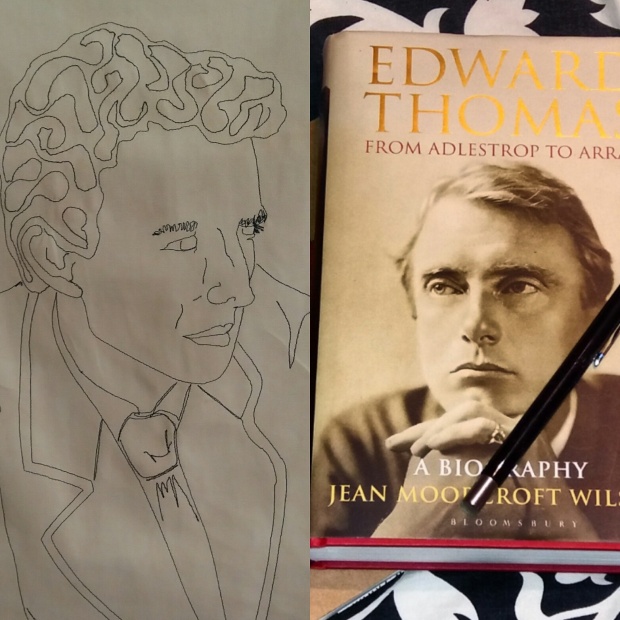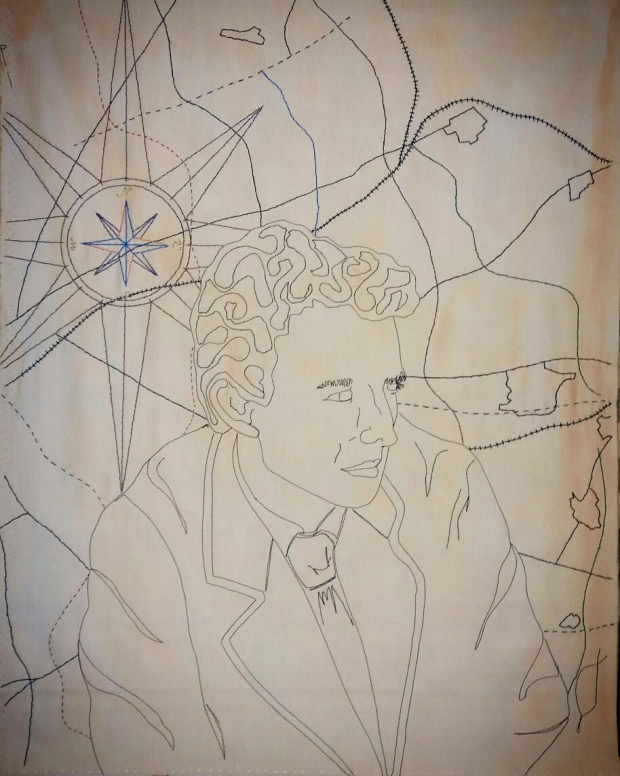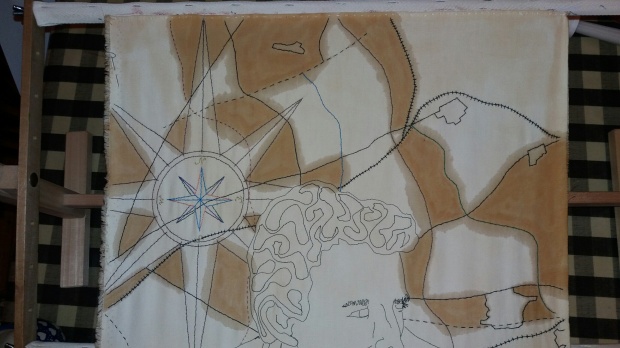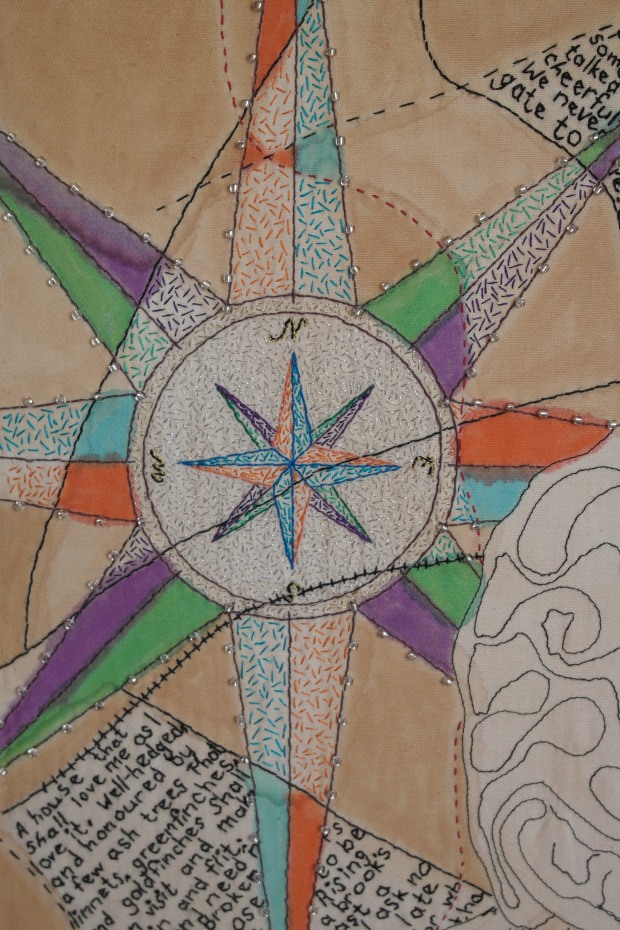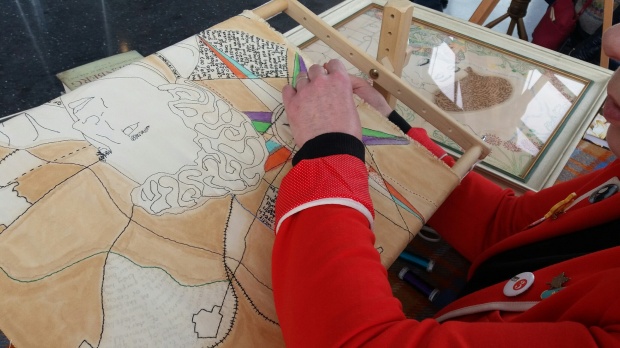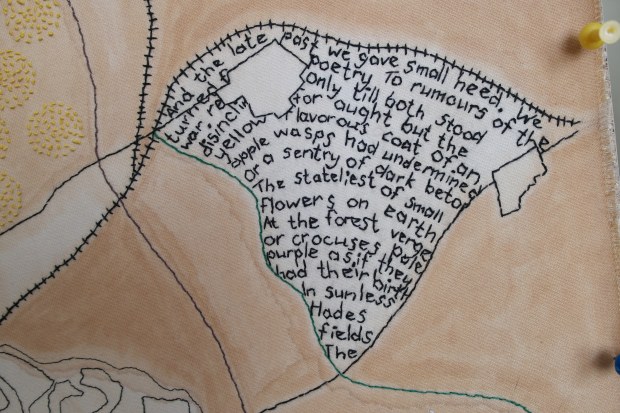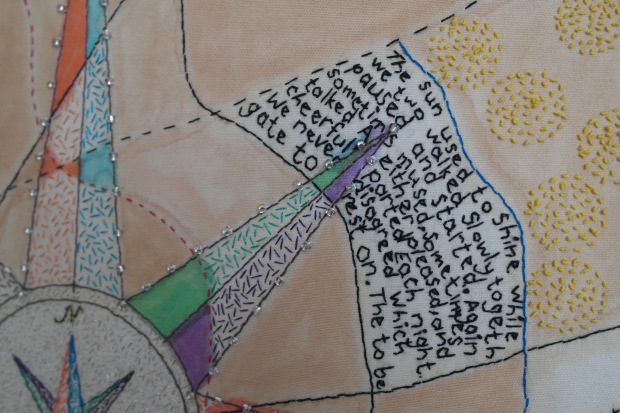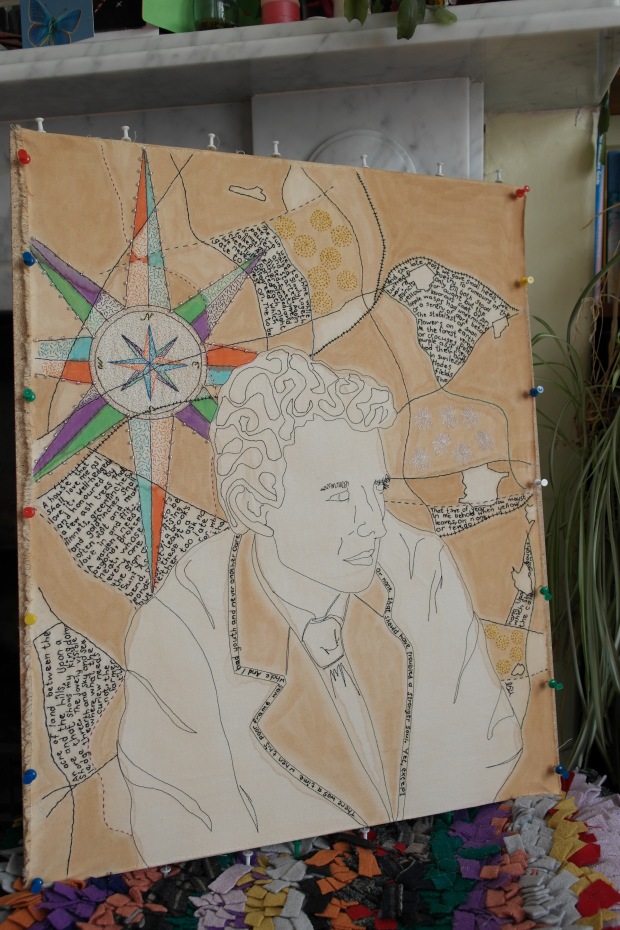This weekend is the sees the 100th Anniversary of the death of war poet and artist, Isaac Rosenberg. Over the last few years, I have been working on a series of portraits of poets who died during the First World War: Rupert Brooke, Wilfred Owen, Edward Thomas and here are photographs, with a bit of background about my portrait of Isaac Rosenberg.

Isaac Rosenberg hand stitched portrait.
Rosenberg came from a deprived, working class background. His parents were pacifists who had fled from Lithuania so that his father could avoid conscription to the Russian Army, first moving to Bristol then onto the East End of London. He was the eldest son of Orthodox Jews and “for his part Rosenberg claimed that Jewishness gave him and his fellow Jewish artists ‘that which nothing else could have given’”. (Jean Moorcroft Wilson, ‘The Making of a Great War Poet’, page 3.)
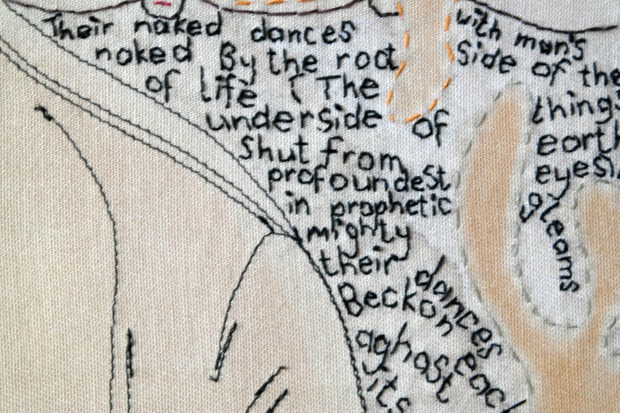
‘Daughters of War’ detail.
Rosenberg was a painter and a poet, he attended the Slade School of Art and trained as an engraver. Due to his background, he was automatically enlisted to the 12th Battalion of the Suffolk Regiment (a Bantam regiment) as a Private rather than as an Officer, he therefore found that doing jobs such as a stretcher bearer gave him more of a gritty reality of war and this is reflected in his poetry.
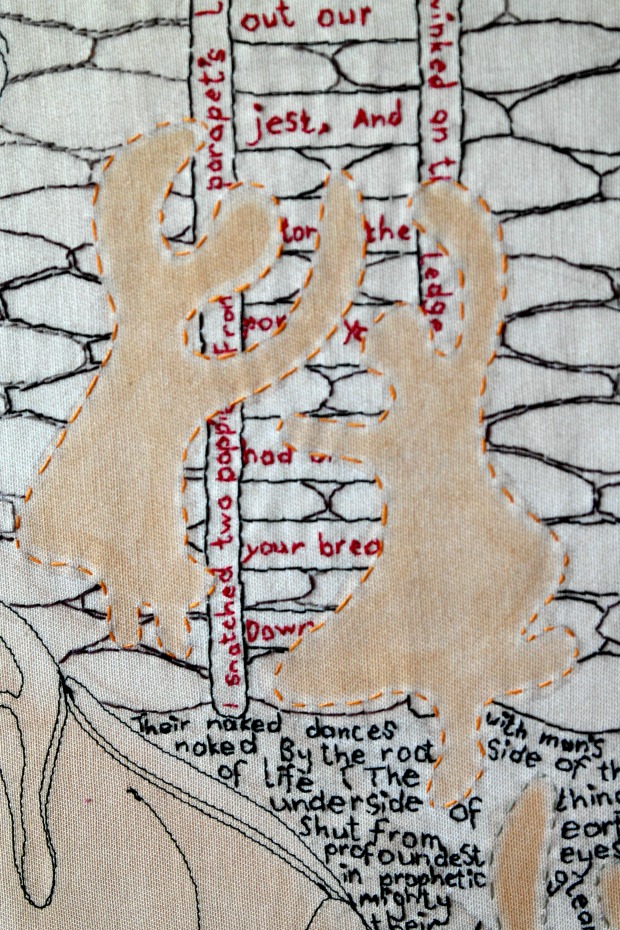
Daughters of War
Within this portrait, I have used hand stitched references to his poetry and his life. A number of his poems I found very pictorial and as I was reading his biography by Jean Moorcroft Wilson as preparation for the portrait, I was noting ideas for imagery. One such poem was ‘Daughters of War’, which drove my I need to find a way to illustrate these ‘spirits’ taking the souls of the dead and dying soldiers to be their partners. I stitched frenzied figures dancing, with a section of the poem hand stitched around them.
The figures of the Daughter of War, also symbolise the soldiers who also dance around a flame in ‘Louse Hunting’. This poem depicts some of the terrible issues the soldiers had to put up with day to day, besides fighting in a war.
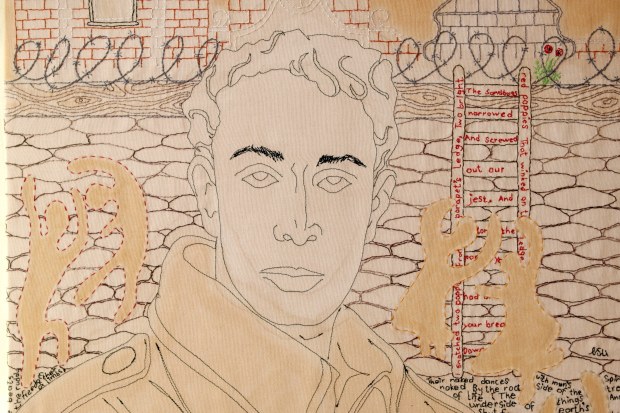
Detail from portrait of Isaac Rosenberg.
‘Break of Day in the Trenches’ and ‘In the Trenches’ were two poems which I have also used to aid the composition of this portrait. ‘In the Trenches’ talks of a poppy at the top of a parapet, not far from the barbed wire of no man’s land, and the terrible aftermath of a shell with the poppy strewn on the floor.
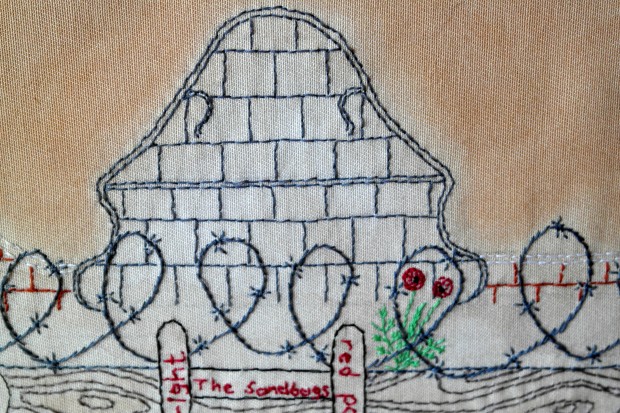
Detail from portrait, poppy on the parapet of the trenches.
I have also included imagery of Whitechapel Library where, before the war, Rosenberg spent many evenings with his fellow artists and poets, in this portrait Whitechapel Library is positioned in the place of no man’s land, where he would die.
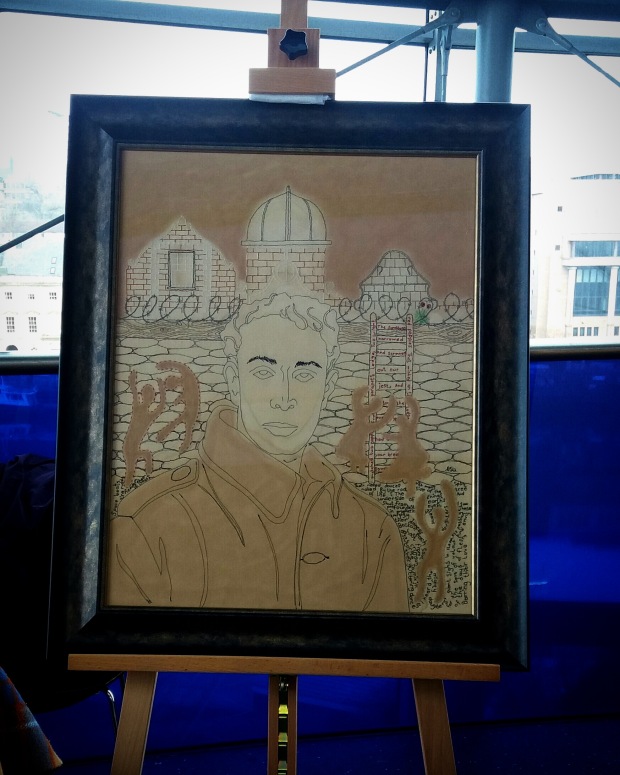
Framed portrait of Isaac Rosenberg at this years Radio 3’s Free Thinking Festival, at the Sage Gateshead, March 2018.
Rosenberg died at dawn on the 1st April, 1918 during a German raiding party but his body was not recovered until the 16th April near Arras. His war poetry is now considered to be some of the finest from the First World War.


